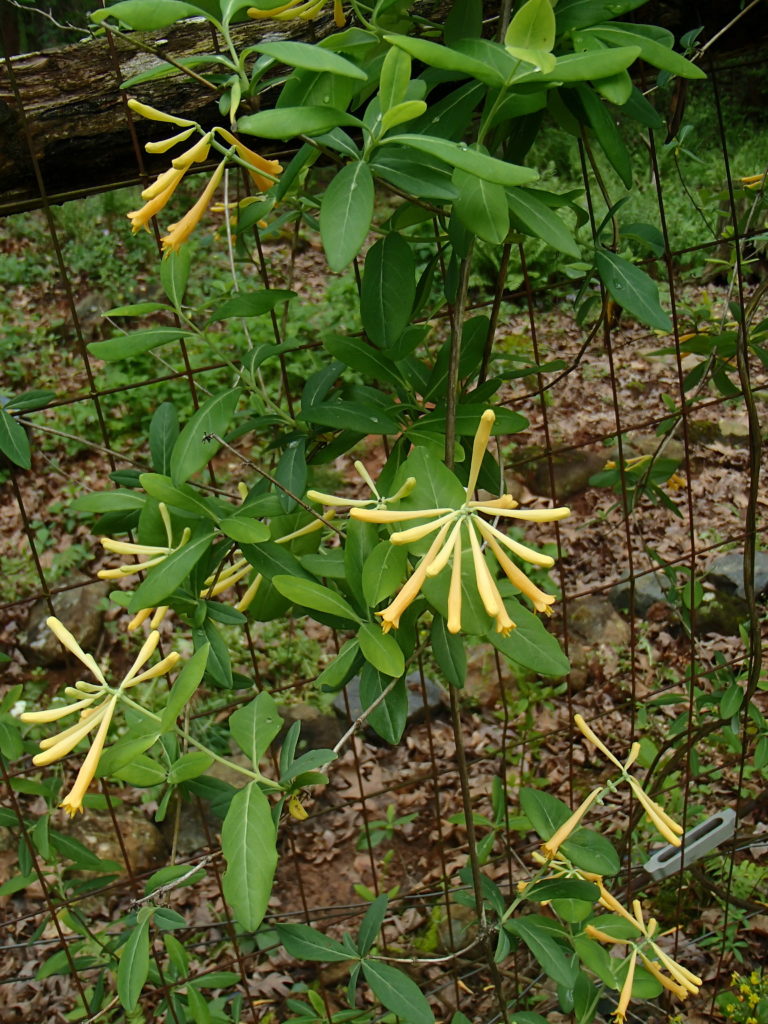This plant is not currently for sale. This is an archive page preserved for informational use.
John Clayton’ is a cultivar of Coral Honeysuckle’s forma sulphurea (yellow form). It has the same charming leaf forms as Coral Honeysuckle and lovely warm yellow 2-inch trumpet-shaped flowers. It blooms in late spring, when the arriving hummers are drawn to the trumpet-shaped flowers, and continues flowering sporadically until fall. It also produces many inedible (for people), but very showy, orange/red berries for the birds. The vine is not as large as the species Coral Honeysuckle, and lends itself to fences or small trellises in full sun or mostly sun. It is evergreen in the Deep South. Honeysuckle ‘John Clayton’ was originally found (1991) on the grounds of a 17th-century Abington church in Virginia, and is named after a colonial botanist. This yellow Honeysuckle is a selection, not a natural variety, and is not listed with USDA separately from Coral Honeysuckle. It is beautiful, and obviates any need for a potentially invasive yellow honeysuckle (Lonicera japonica)!!!

